

 The
below test was run for 90 minutes (1.5 Hours) with a constant
12.90~13.10 amps fed to
the NiCrome wire. This amount of damage is considered to be
negligible. The internal temperatures were around 350 deg F from T+3 to
T+20. Then the internal temperature dropped to around 200 F and
stabilized (believed to be heat from the hot wire). At T+45 the inlet
O2 was raised 1% at T+65, it was raised another 1%, at T+85 another 1%
and the test terminated at T+90 Click on the photos of a larger
photo. ( yes it's the same box as test one, Just new paper inside)
The
below test was run for 90 minutes (1.5 Hours) with a constant
12.90~13.10 amps fed to
the NiCrome wire. This amount of damage is considered to be
negligible. The internal temperatures were around 350 deg F from T+3 to
T+20. Then the internal temperature dropped to around 200 F and
stabilized (believed to be heat from the hot wire). At T+45 the inlet
O2 was raised 1% at T+65, it was raised another 1%, at T+85 another 1%
and the test terminated at T+90 Click on the photos of a larger
photo. ( yes it's the same box as test one, Just new paper inside)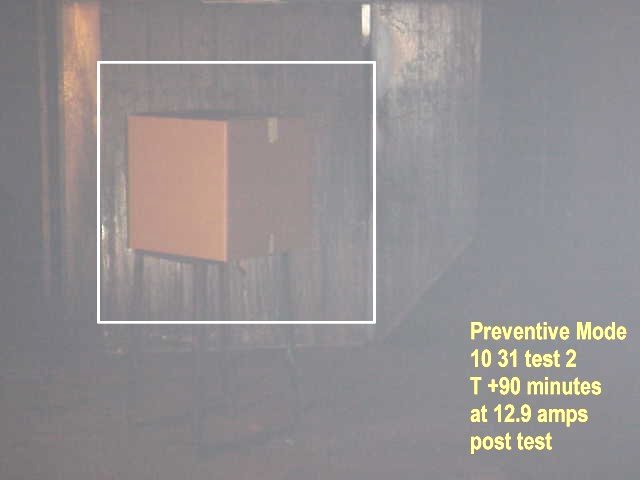 |
This
is the second of the series and the last prior to the briefing to be
given to the International Aircraft Systems Fire Protection Working
Group, in Atlantic city NJ on Nov. 6, 2003. A copy of the presentation
will be made available at a link below, after the meeting. |
||
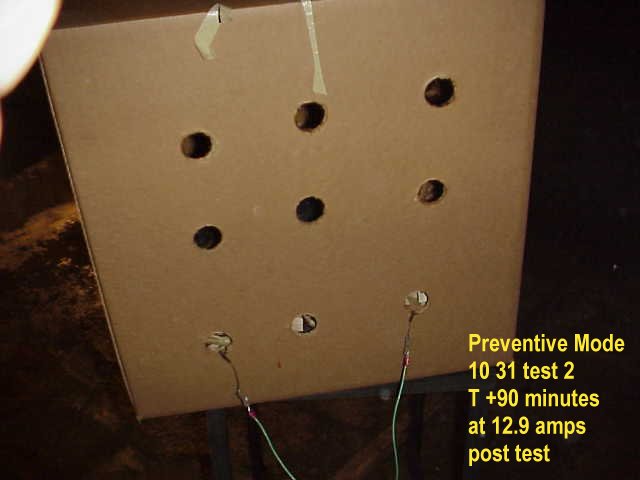 |
As
in the last test hypoxic air was applied, after
the atmosphere was reduced to 14.5% oxygen, the
115Vac was applied to the system (T+0) , This photo is T+90
minutes after application of the power to the NiCrome wire. In
this view the box appears normal. (this is also the same box used in the previous test) |
||
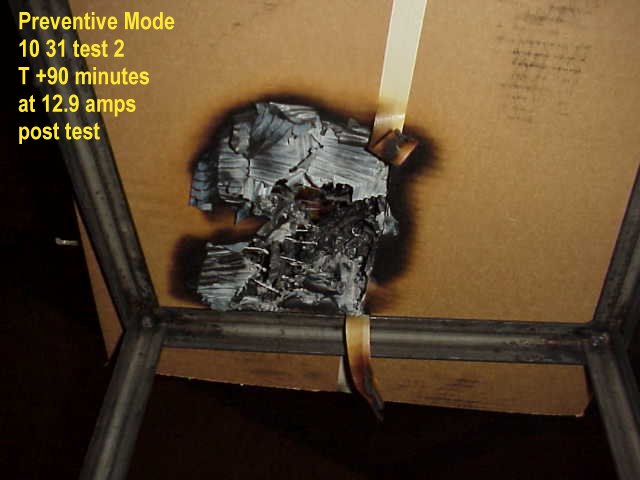 |
After
the box internal temperatures stabilized and no apparent flames the O2
was increased every 20 minutes
until a change in the temperature was observed. At 15.2% a
increase in temp was observed. Sparks and ash was observed starting at
the T+43 minutes falling from the box. This hole was found on post test
inspection. |
||
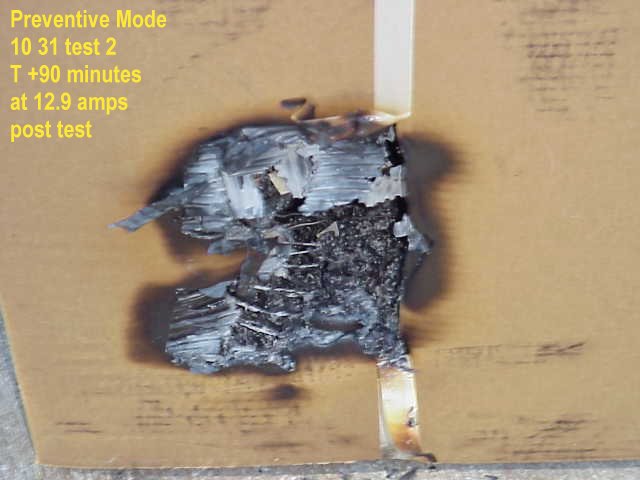 |
As you can see
here the
igniter wire fell to the bottom and burned a hole in the bottom of the
cardboard with no visible flames over a 90 minute test. |
||
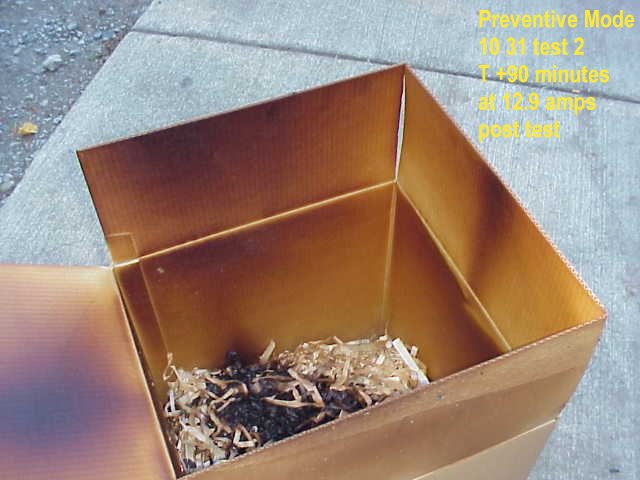 |
In this photo
the damage to
the contents of the box is quite evident. Discoloration and scorching
is apparent. Total loss of weight of the
box was around that 90 grams (1 gram per minute) |
||
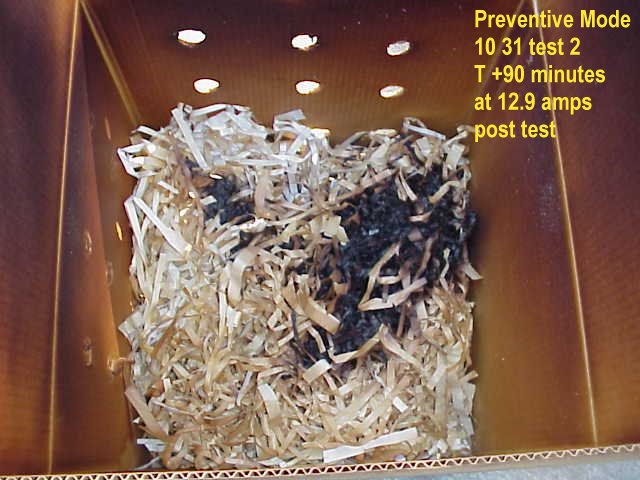 |
Once
again the Hypoxic air prevents the growth of the fire. Damage it
limited to the paper being exposed to the radiant heat from the NiCrome
wire. The internal temperatures exceeded 350 F producing large quantities of smoke, but no flame. |
||
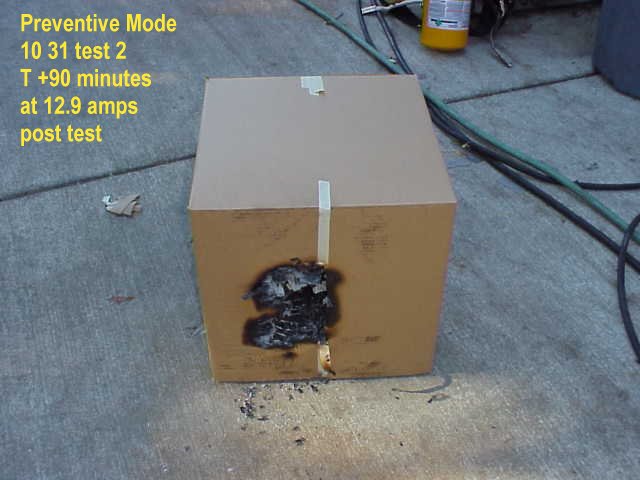 |
T+90
damage is limited to 90 grams of weight loss and a hole burned through
the bottom of the box. The holes appears to be caused by the wire
dropping to the bottom of the ignition box. The wire was touching
the inner liner after the test. |
||
| Low Pressure Dual Fluid Water Mist (LPDF) and Hypoxic Air as a Viable HALON Alternative | PDF
copy available at this link |
||